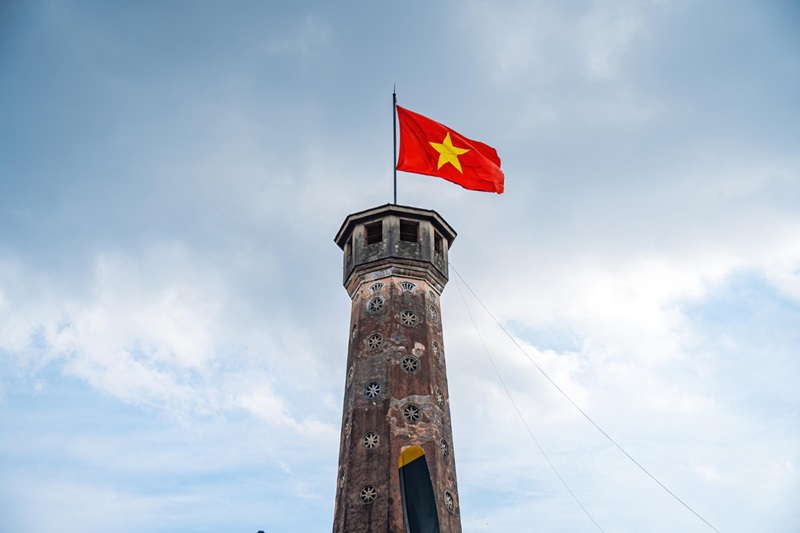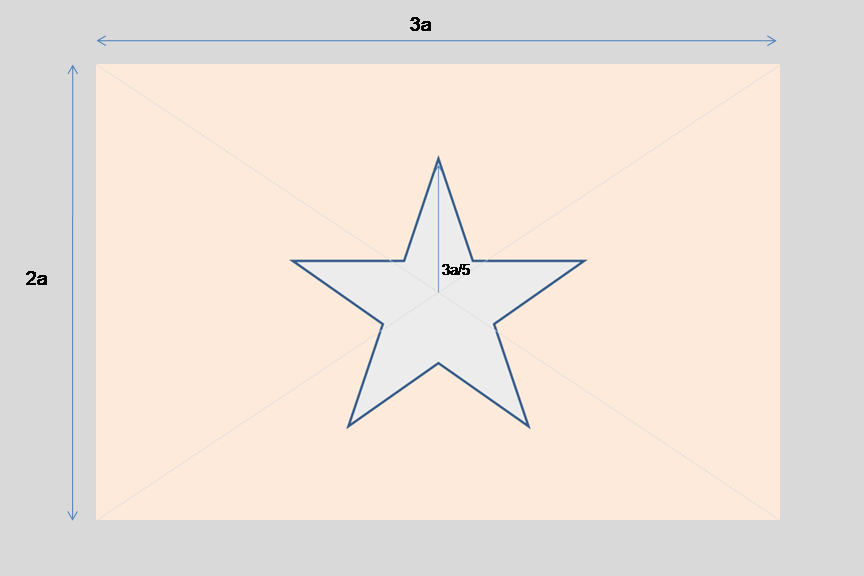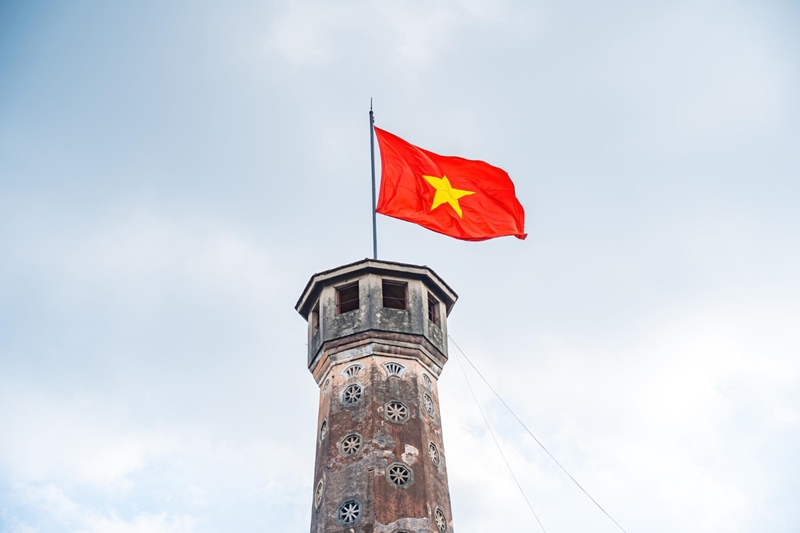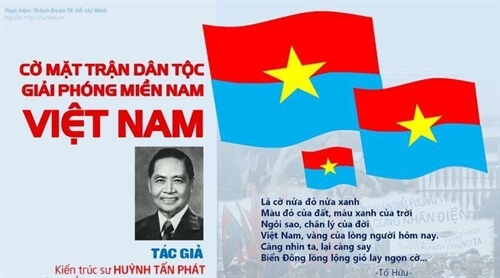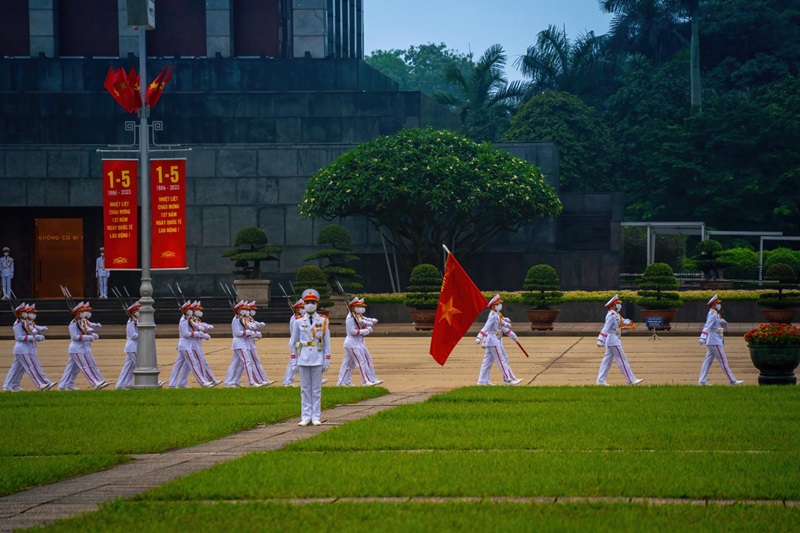The Vietnamese national flag is rectangular, with a width of 2/3 of the length. The background is bright red, and in the middle is a bright yellow five-pointed star. This national flag is often called the Red flag with a yellow star—shorten it to “Red Flag—Yellow Star.”
Red flags with yellow stars appear everywhere in the country, in offices, squares, schools, in front of people’s houses on important occasions, and at vital events.
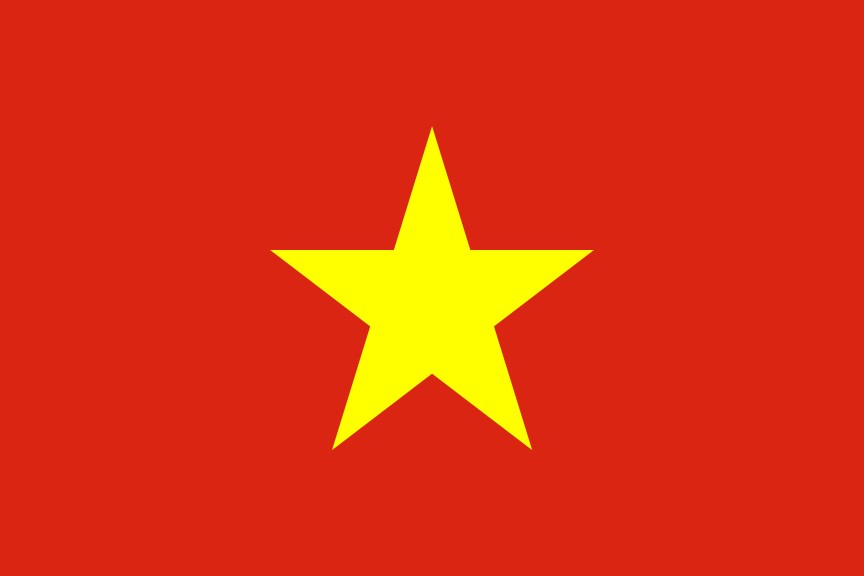
Meaning of the Vietnamese flag
The red flag with a yellow star symbolizes Vietnam’s peace, independence, sovereignty, and territorial integrity, and it is the pride of the Vietnamese people.
The red color of the flag background symbolizes the blood of heroes who sacrificed for the peace and freedom of the country. It is also the color of faith, will, determination, and resilience in all classes in Vietnam.
The yellow star in the middle symbolizes the golden skin color and the glowing soul of the nation. The five points of the star represent solidarity between 5 main classes of people in society, including Sĩ (students, intellectual workers), Nông (farmers), Công (workers), Thương (traders, businesspeople), and Binh (security forces).
No matter where they are, the Red Flag with the yellow star is always a place containing faith, hope, pride, and encouragement for every Vietnamese person. The flag represents the strongest and clearest proud spirit of the nation.
The size of the Vietnamese flag according to government regulations
According to the decree of the Provisional Government of the Democratic Republic of Vietnam signed by the Minister of Interior, General Vo Nguyen Giap, on September 5, 1945, the Vietnamese flag has:
- The flag’s background is bright red.
- A bright yellow star includes five convex corners and five concave corners.
- Location of the star: the center of the star is placed precisely in the center of the flag background, with a convex corner facing straight up.
- Dimensions: Length = a, height (or width) = 2/3a
- Star size: from the center of the star to the end of a convex angle = 1/5a, and from the star’s center to the end of a concave angle = 1/10a.
Since then, this ratio has always been the standard, consistent, and unchanged. Based on that standard ratio, depending on each specific need and space, the Red Flag with a yellow star can have various sizes, large and small.
From small sizes 60cm x 90cm, 70cm x 105cm, 80cm x 120cm, 90cm x 135cm, 120cm x 180cm. It can come in large sizes of 2m x 3m, 4m x 6m, and 6m x 9m.
History of the formation of the Vietnamese National Flag
The Vietnam flag first appeared in 1940 during the revolutionary movement in Cochinchina (now called Nam Bo).
On September 5, 1945, after the success of the August Revolution of 1945, the Provisional Government of the Democratic Republic of Vietnam issued an official decree adopting the red flag with a yellow star as the national flag. The decree was signed by the Minister of Internal Affairs of the Provisional Government of the Democratic Republic, General Vo Nguyen Giap.
On April 30, 1975, South Vietnam was liberated, and the country was completely unified. During the first session of the 6th National Assembly on July 2, 1976, the Government decided to change the country’s name to the Socialist Republic of Vietnam and adopted the Red Flag with a yellow star as the country’s official flag.
Since then, the Red Flag with a yellow star has been the only National Flag of Vietnam. This flag has accompanied the Vietnamese people through many historical periods of glorious struggle for peace, unification, and territorial integrity.
On the path of building and developing the country, the national flag of Vietnam has become a source of pride, will, and incredible motivation to push the whole country forward, standing with international friends on five continents.
Vietnamese flag before 1975
Before 1975, along with the development and fluctuations of history, different flags also appeared on the territory of Vietnam. These flags are associated with important historical milestones of the country.
Dragon Star Flag (Cờ Long Tinh)
The Dragon Star Flag, which existed from 1920 to 1945, was the symbol of the feudal regime of the Nguyen Dynasty during this period.
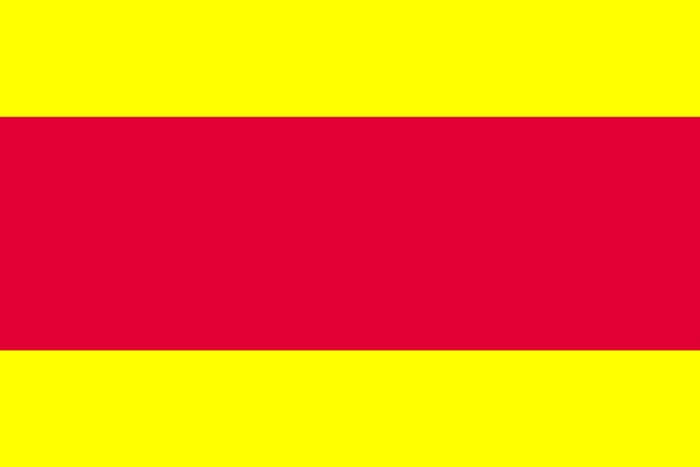
There are two variations of the Dragon Star flag. Initially, the flag had a rectangular shape and a yellow background, with a large red stripe in the middle, stretching across the flag. By March 1945, the Long Tinh flag had a new look, with the red stripe being narrowed and only 1/3 of the height of the entire flag.
The Dragon Star flag appeared at essential events of the Royal Family, such as longevity ceremonies or when the king was on the throne. By 1941, under King Bao Dai’s reign, the public could use the Long Tinh flag during inaugurations, holidays, and celebrations. (See more Long Tinh Ky here)
This flag ended its duties and functions in mid-1945, making way for the Que Ly flag.
Hexagram Ly Flag (Cờ Quẻ Ly)
Appearing in June 1945, the Hexagram Flag was signed by King Bao Dai and designated as the new national flag of the Vietnamese Empire.
However, on September 5, 1945, after the success of the August Revolution, the Provisional Government of the Democratic Republic of Vietnam issued a decree abolishing the Que Ly flag and adopting the red flag with a yellow star as the national flag.
Thus, the Que Ly flag only existed for a fairly short period; however, it marked the transition from the last feudal regime in Vietnam to the Government of the Democratic Republic of Vietnam.
The Ly hexagram flag has a rectangular design, a dark yellow background, and a dark red hexagram (including three lines, including a broken line between two solid lines). Flag size follows a 2:3 ratio. The hexagram is located right in the center of the flag, a distance of 1/4 of the height and 1/6 of the width from the four borders.
Flag of the National Front for the Liberation of Southern Vietnam
The flag of the National Front for the Liberation of South Vietnam, also known as the “liberation flag”, was born in 1960 and is the symbol of the National Front for the Liberation of South Vietnam.
The Liberation Flag is modeled after the Red Flag with a yellow star of the Democratic Republic of Vietnam. On that basis, the flag background was adjusted with the upper half remaining red and the lower half replaced with blue.
The red background at the top symbolizes that North Vietnam has gained independence. The blue background below symbolizes the aspirations of the soldiers and people of South Vietnam for the day of liberation and peace.
From 1960 to 1975, the Liberation Flag fought tirelessly with the people of the South. On April 30, 1975, this half-red, half-blue flag flew on the roof of the Independence Palace. South Vietnam was completely liberated. After this event, the whole country of Vietnam was independent, peaceful, and fully unified.
On July 2, 1976, at the first session of the 6th National Assembly, it was agreed to change the country’s name from “Democratic Republic of Vietnam” to the “Socialist Republic of Vietnam.” It took the red flag with a yellow star as the national flag.
The half-red, half-blue Liberation Flag officially completed its mission from here. The blue half of the South, longing for liberation, has now become independent to transform into the red half, blending with the joy of complete unification of the whole country.
In what cases is the National Flag hung?
According to government regulations, Section II of Regulation 974-TTg, dated July 21, 1956, stipulates the case of hanging the National Flag as follows:
- The national flag is hung in meeting rooms of authorities and organizations during solemn meetings.
- The national flag is only hung outside the house on the following the New Year and holidays:
- New Year’s Eve
- Lunar New Year
- Anniversary of the general election: January 6
- International Labor Day: May 1
- Celebrating President Ho Chi Minh’s birthday: May 19
- August Revolution Anniversary: August 19
- National Day: September 2
In other cases where the national flag must be hung, the Government or the regional, provincial, or city administrative committee will issue a notice.
The national flag is hung or carried in places where meetings, demonstrations, mass mobilization, and public works are held, such as mobilizing the public for land reform, launching production competitions, building dikes, building roads, or fighting drought.
When flying the Vietnamese flag, please note:
- Do not leave the star upside down (as prescribed in Section III of Regulation 974-TTg on the use of the national flag of the Democratic Republic of Vietnam in 1956).
- In festival areas, the National flag must be hung in a solemn place, higher than event flags and religious flags (as prescribed in Point b, Clause 1, Article 12 of Circulars No. 04/2011/TT-BVHTTDL).
- Agency and private vehicles are not allowed to display the national flag (as prescribed in Section VI of Regulation 974-TTg on the use of the national flag of the Democratic Republic of Vietnam in 1956).
The author of the flag is Nguyen Huu Tien, a former teacher, born on March 5, 1901, in Yen Bac commune, Duy Tien district, Ha Nam province today. In 1927, Nguyen Huu Tien joined the Revolutionary Youth Union. In 1931, he was arrested and taken to Con Dao prison by the enemy. In 1935, Nguyen Huu Tien and several political prisoners escaped from Con Dao prison and returned to the mainland. He participated in revolutionary activities in Can Tho and was then assigned to be responsible for propaganda and printing revolutionary documents. With that premise, Huu Tien created a red flag with a yellow star.
Reference source:
- https://vi.wikipedia.org/wiki/C%E1%BB%9D_Long_tinh
- https://nhandan.vn/co-do-sao-vang-bieu-tuong-thieng-lieng-dac-biet-cua-dan-toc-viet-nam-post712980.html
- https://truongchinhtribentre.edu.vn/content/%C3%BD-ngh%C4%A9a-l%C3%A1-c%E1%BB%9D-c%E1%BB%A7a-m%E1%BA%B7t-tr%E1%BA%ADn-gi%E1%BA%A3i-ph%C3%B3ng-mi%E1%BB%81n-nam-vi%E1%BB%87t-nam
- https://baoquankhu7.vn/la-co-mat-tran-dan-toc-giai-phong-mien-nam-viet-nam–1277935983-006647s35810gs
